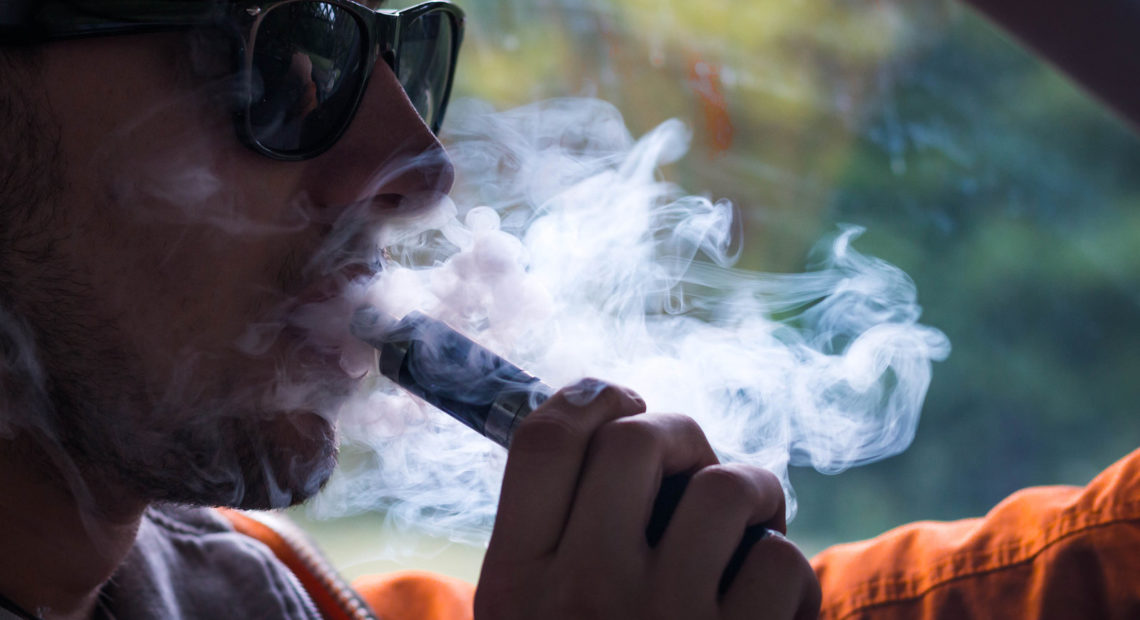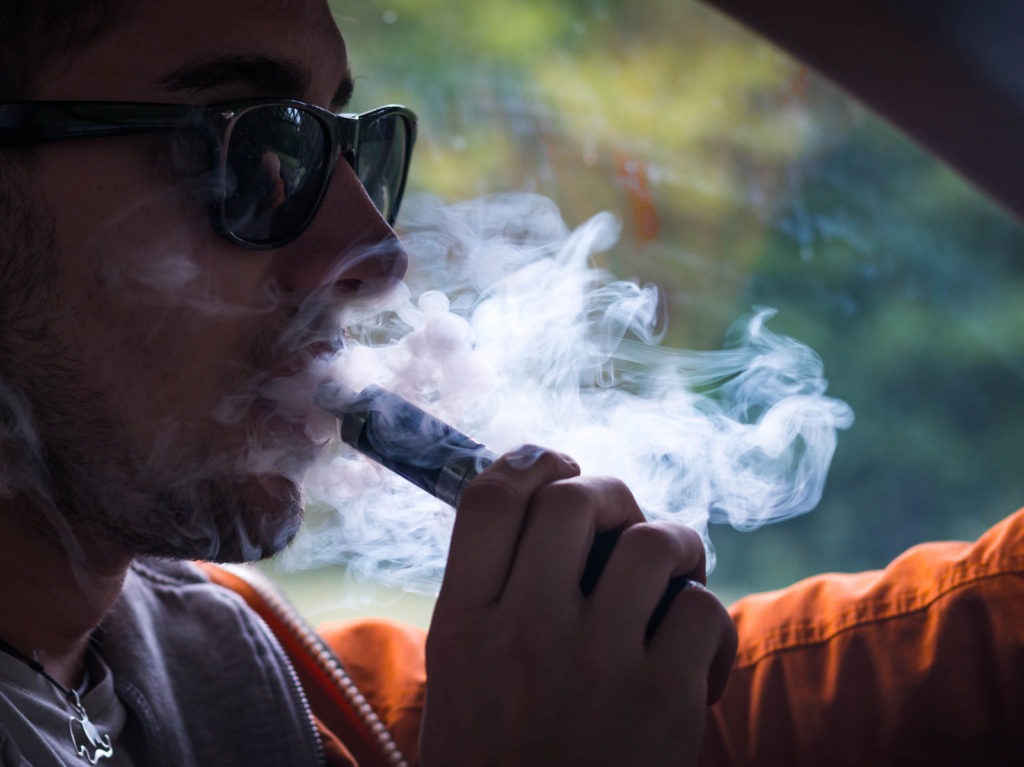
Is A Vaping-Linked Illness A Public Health Crisis? Depends On Who You Ask
BY LAURA SANTHANAM / PBS NEWSHOUR
In a complex world surrounded by seemingly endless risks, why should one, like vaping e-cigarettes, become a problem that attracts so much national attention from health officials, politicians and the press?
No single answer satisfies that question, says Kasisomayajula Viswanath, a health communications expert and professor at the Harvard T. H. Chan School of Public Health.
RELATED: Jay Inslee Announces Washington Ban Of Flavored Vaping Products
But, when young people who used e-cigarettes started developing a pulmonary illness, the concern quickly escalated into a public health crisis. For the Centers for Disease Control and Prevention, which is tasked with researching and raising awareness of national public health issues, they say that they will look into “anything that threatens the public health” in an effort to “prevent additional people from getting sick,” according to CDC spokesman Thomas Skinner.

File photo. The owner of a Spokane electronic cigarette store examines his display case. CREDIT: JESSICA ROBINSON / N3
But, it seems that some health concerns gain more traction in the public eye.
News of a poorly understood illness linked to vaping e-cigarettes has swept parenting forums, social media feeds and news headlines in recent weeks. Hundreds of otherwise healthy young people have gotten sick and even died.
On Sept. 6, federal officials told the public to avoid using e-cigarette products entirely until they understood what was causing respiratory illness after vaping. Victims typically reported coughing, difficulty breathing, shortness of breath, chest pains and nausea. Injuries to their lungs resembled chemical burns.
READ MORE: What are symptoms of vaping-related lung disease? Answers to your e-cigarette questions
Since then, the CDC has tracked 1,080 probable and confirmed cases of people being sick in 48 states and the U.S. Virgin Islands. So far, 18 people have died in 15 states, the CDC reported Thursday. Health officials reported that 70 percent of patients were male, and 80 percent of those treated for the illness were under age 35. Of those, 16 percent of patients are younger than 18-years-old, and another 21 percent are between ages 18 and 20.
“It’s small in terms of statistics” but “very large in terms of tragedy,” said Anne Schuchat, the CDC’s acting deputy director, during a call with reporters Thursday.
Meanwhile, the Food and Drug Administration has tested hundreds of samples for nicotine, opioids, THC (the primary psychoactive component of marijuana), toxins and poisons and launched a criminal investigation. Preceded by a handful of states, the Trump administration has moved to ban certain types of flavored e-cigarettes. While THC was present in 77 percent of the cases, officials maintained Thursday that no single product has been linked to all reported illnesses.
But the relatively small size of the outbreak has led others to scoff at the warnings, asking why there isn’t more of an outcry over something like the risk from influenza.
What role does the media play?
When a public health problem starts to take shape, the media rush to fill the 24-hour news cycle in an effort to satiate people’s sudden appetite for more information. Journalists often turn to someone offering guidance in real-time, but they do so at their own peril, says Matt Gertz, senior fellow at Media Matters for America, a left-leaning media watchdog group.
In the absence of hard science, which takes time to collect, analyze and share, political influencers often chime in with talking points on the day’s news, creating coverage that can fan fears about a developing health story.
“If you can’t get really good scientific data, you can’t really get expert testimony on it, you’re going to go with whoever the loudest person in the room is,” Gertz said.

File photo. CREDIT: sestovic/Getty Images
We have seen this play out before.
In 2014, the Ebola virus tore through West Africa. Thousands of people died of virus hemorrhagic fevers in Guinea, Liberia and Sierra Leone from 2014 to 2016. It was, and remains,an intense public health crisis and still poses a major danger to people within the Democratic Republic of the Congo and other West African nations.
But that threat did not spread to the U.S. Of the 11 people evacuated to or diagnosed with Ebola in the U.S. in 2014, only two died. But you wouldn’t know that from the wall-to-wall coverage.
Nationwide, the threat was overestimated in large part because people latched onto this sense that the virus was uncontrollable, Viswanath said. For example, at the time CNN interviewed opthamologist and fiction author Robin Cook, who in 1987 wrote the thriller, “Outbreak.” He was not someone who had actively researched this deadly virus in a way that was relevant to the conversation at the time.
“This is really wacky stuff, but if you’re in a position where you have decided that this is your major story and you just need to fill time, it’s what ends up happening,” Gertz said.
Why does vaping now spark similar fears?
Part of what fueled alarm over the pulmonary injuries was the fact that officials knew so little about its origins. Everyone who got sick had vaped, but it was unclear what variable or combination of substances or conditions caused otherwise healthy young people to require hospitalization and even die.
READ MORE: Teens don’t always know what they’re vaping, study says
Because e-cigarettes are such a new and loosely regulated product, with little research about the long-term effects of use, the risk was unclear, Viswanath said. That feeling that something, like the repercussions of vaping, is not fully understood feeds panic and the perception of a crisis, he added. Right now, the U.S. is still trying to understand what it is dealing with.
What we may miss
Communication scholar Dietram Scheufele at the University of Wisconsin-Madison said that at any point in time, roughly five issues tend to dominate a person’s memory. A constantly shuffling set of concerns struggle endlessly for one’s attention.
The alarm that has met the pulmonary illness tied to vaping e-cigarettes makes sense, Scheufele says, because its man-bites-dog nature bears the classic hallmarks of stories that captivate the public, if only for a season. The phenomenon is new, something the general public did not see coming, and an illness that is harming younger people, he said.
Based on years of data and a basic understanding of public health, far more people will become sick and die after exposure to influenza than vaping, Scheufele said, but the dangers of the flu and it’s predictably awful outcomes are too boring to scare people.
“It’s like the like 470th round in a NASCAR race,” he said. “It’s not interesting anymore unless something crashes and burns.”
Moreover, people now often get their news from algorithmically-driven social media, rather than traditional platforms, such as newspapers or the nightly news, Scheufele said. That means people receive news that entertains them versus news that informs them. He fears important news could lose out in the constant battle for public attention.
Interest in vaping may already be fading, Scheufele said, as news of Trump’s impeachment inquiry in Congress already has started to muffle the CDC’s weekly vaping updates.
Gretchen Frazee contributed to this report. Laura Santhanam is the Data Producer for the PBS NewsHour.
Copyright 2019 PBS NewsHour















